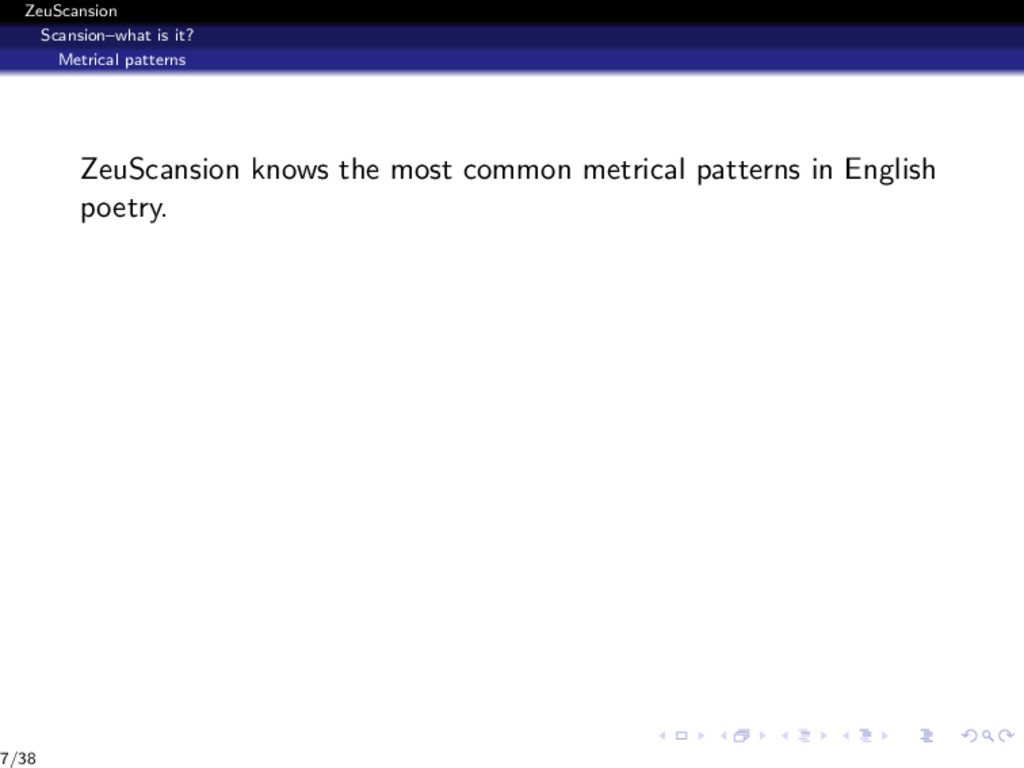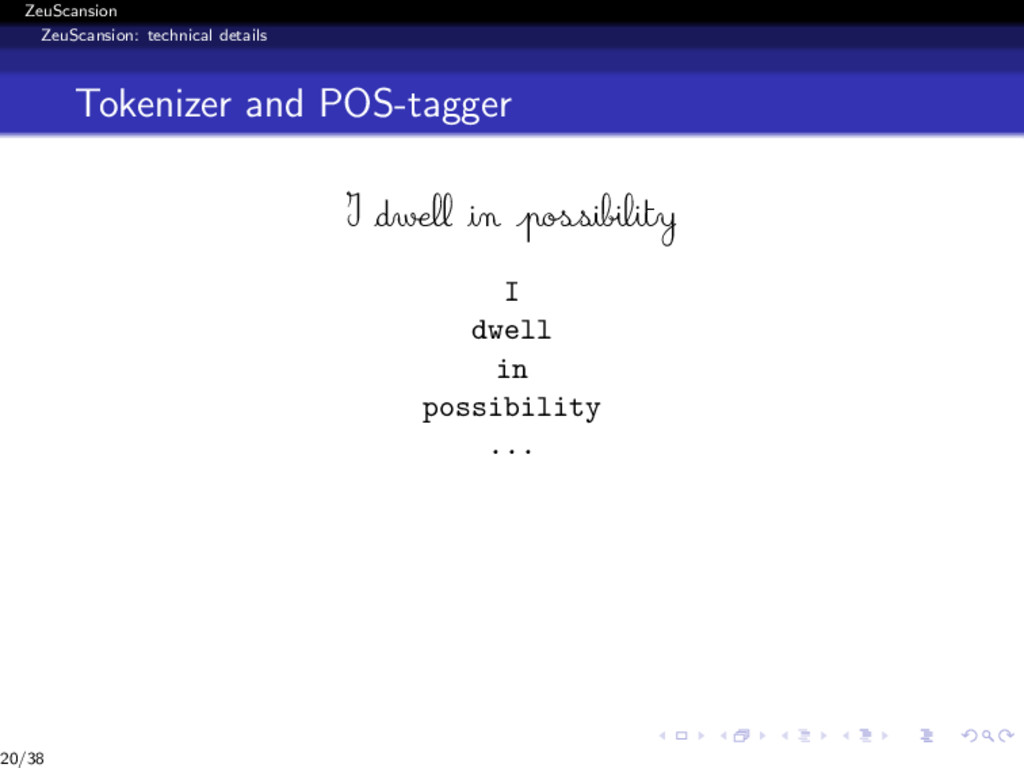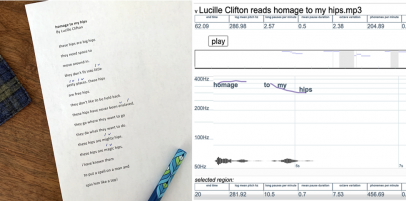

- #Poetry scansion tool how to
- #Poetry scansion tool manuals
- #Poetry scansion tool driver
- #Poetry scansion tool manual
- #Poetry scansion tool archive
In the case of Martin's research, the Prosody Archive helps her explore how a seemingly objective system for reading a poem can embody issues of national identity, class and patriotism. "I think of it as the field where the humanities and the more algorithmic and mathematical approaches meet, intersect and intermingle, and sometimes produce practical outcomes like tools that someone can use, but also give rise to new questions and deeper understanding." "The field of digital humanities has evolved rapidly and there are a lot of different opinions about what the term means," said Clifford Wulfman, digital initiatives coordinator at the Princeton University Library. From a desktop computer, a researcher can scan large numbers of tomes and search for trends using statistical tools, or select one for a close reading.
#Poetry scansion tool driver
But perhaps the biggest driver of the digital humanities movement is the potential to search widely, deeply and in new ways.

Research budgets for physical trips to far-flung libraries have shrunk. A generation raised on Google has come to expect instant online access to everything. This fall, Princeton opened the Center for Digital Humanities, directed by Martin, to enable faculty and student researchers to harness the power of computing for research activities that once were only possible during laborious visits to musty archives and libraries.Ī number of motivations drive the growing trend in "digital humanities," defined broadly as the intersection of technology and the humanities. "We are making these texts available in one place for the first time," Martin said, "and enabling scholars to explore new analytical questions in the study of poetry."īringing searchable books, maps and other historical texts online is a growing movement in the humanities at universities around the world, including Princeton. Currently in beta-testing, the Prosody Archive will be accessible to the public at the end of the year, with full access to the archive by 2017. Letters with prosodic marks are not recognized by typical computer search techniques.Įnlisting the help of computer scientists and librarians, Martin began in 2011 to build the Princeton Prosody Archive, a full-text searchable database of more than 10,000 digitized records published between 17. Although many of the works she had collected already had been digitized by initiatives such as Google Books, others were scattered across databases, and most important, were unsearchable.
#Poetry scansion tool how to
The problem Martin faced was how to search across her assembled sources.
#Poetry scansion tool manuals
These rules, found in versification manuals and grammar schoolbooks of the period, sometimes appeared as markings on the poem itself - typically accents on stressed syllables, little u-shaped marks called breves atop non-stressed syllables, and vertical lines to indicate pauses. Meredith Martin, an associate professor and expert on English poetry of the 19th and 20th centuries, had assembled the sources to explore how the thinking about these "rules" for reading poems had changed during the Victorian and early Modernist periods. There were handbooks, essays, letters from one poet to another, and even newspaper articles dedicated to arguments over what rhythms should be used, which syllables should be stressed, and where the reader should pause - all elements of prosody, the study of poetic form. It employs two different algorithms for dividing iambic lines into feet, and another for anapestics when it loads a poem-file it samples the lines to deduce whether to treat them as iambic or anapestic.Once upon a midnight dreary, an English professor at Princeton sat in her office, musing over many volumes of forgotten lore about the right way to read a poem. Its treatment of a word (syllabification and stress) can be changed by the user. It's fairly successful it handles Larkin's "Church Going" and Browning's "My Last Duchess" and Carroll's "The Hunting of the Snark" pretty well, and none of them is particularly easy to scan.

I don't know of another program that does quite the same thing.

#Poetry scansion tool manual
There's a Manual that describes both how the program works and why it works that way. Though it uses the traditional foot-based scansion, some of its techniques and principles of construction derive from recent decades' work in generative phonology. At the same time, it's suitable for some kinds of research on metrics. As you "Step" through the process, the program explains what it's doing: identifying syllables and lexical stresses, dividing the line into feet and so on. You can load the text file of a poem, or type lines in by hand. The Scandroid is a program that scans English verse in iambic and anapestic meters.


 0 kommentar(er)
0 kommentar(er)
